What’s a product that everyone, female or male, can benefit from? Besides sunscreen of course.
… a Vitamin C serum or treatment!
Vitamin C is so essential and beneficial to skin, you can’t go wrong with a Vitamin C serum. At the minimum, it will quench free radicals for you and make your skin a little smoother. And if the formula is good, it will also boost collagen production, improve the tone and radiance of skin, and reduce some discoloration.
 There are many different kinds of Vitamin C serums. In my opinion, there are 2 main factors to consider when you’re choosing one:
There are many different kinds of Vitamin C serums. In my opinion, there are 2 main factors to consider when you’re choosing one:
- TEXTURE – What you ultimately choose should depend on what you like to put on your skin. This is a product that is best used everyday, so you need to like putting it on. Do you prefer a gel, thin liquid, lotion, cream, or even powder? Luckily, there are so many options, you can find a good treatment with your preferred texture.
- SKIN TYPE – How sensitive or reactive is your skin? Some people can use the most aggressive form of Vitamin C, while you may need to go with a gentle form if you have sensitive or thin skin, or are fairly young (your skin hasn’t become rough, thick, and damaged).
The first part of this post is my thoughts on factors you should consider when choosing a Vitamin C product.
The second part is examples of different types of Vitamin C treatments. These are products that I currently use or have used in the past. I didn’t like some of them but included them anyway to point out information you might find useful.
What To Look For In A Vitamin C Treatment
WHAT FORM?
This is the most important factor. Vitamin C comes in different forms, and they are not created equal. (The different forms of Vitamin C are explained here.)
At a minimum, Vitamin C is an antioxidant that quenches free radicals. But a treatment with the best forms will perform better and do more than just offer antioxidant protection. It can increase collagen synthesis and brighten skin. (Certain forms of Vitamin C are better at collagen synthesis and brightening.)
Throughout this post, I’ll reference the following forms (there are more, but these are the ones I’ll talk about):
AA – Ascorbic Acid
THDA – Tetrahexyldecyl Ascorbate
MAP – Magnesium Ascorbyl Phosphote
SAP – Sodium Ascorbyl Phosphate
I personally look for treatments with AA and THDA because these are the most effective forms. MAP is good too, though if a product has THDA, I will choose that over the one with MAP (all other things being equal).
I don’t use treatments with SAP or other forms of Vitamin C anymore, but SAP is still a decent ingredient.
If you are just getting started with skincare, not focused on aging, or don’t want to spend time researching and comparing skincare, it is perfectly fine to use a serum with SAP or another form not listed here.
If you want maximum anti-aging benefits, then focus your attention on AA, THDA, and MAP.
 When buying products with Ascorbic Acid, it is extremely important that you verify that it is stabilized. Ascorbic Acid is a highly unstable ingredient, and most manufacturers using this ingredient aren’t properly stabilizing it. You can learn more in the Vitamin C article.
When buying products with Ascorbic Acid, it is extremely important that you verify that it is stabilized. Ascorbic Acid is a highly unstable ingredient, and most manufacturers using this ingredient aren’t properly stabilizing it. You can learn more in the Vitamin C article.
It’s impossible to tell whether AA is stabilized from the ingredient list. The ingredient list will only list an ingredient; it won’t explicitly state if it’s stabilized. That information (if even provided at all) can only be found in the marketing copy – on the packaging, box, paper insert inside the box, or product description on the brand’s website or retailer’s website. If it isn’t provided, the only way to find out is to ask the company.
Sometimes, Vitamin C is sourced from botanical extracts. So instead of seeing the chemical names above, you will see the name of the plant instead. For example, Ole Henriksen’s Truth Serum Collagen Booster sources Vitamin C from orange, grapefruit, and rosehips along with two synthetically derived chemical forms of it (Sodium Ascorbyl Phosphate, Calcium Ascorbate).
One thing to keep in mind – a synthetic form of Vitamin C is not worse than a botanical form of it. You can learn more about Synthetic vs Natural ingredients here.
AMOUNT OF VITAMIN C
How much Vitamin C is in there? More is better (up to a point).
When there is a large amount of it, the percentage will be stated. For example: 15% L-Ascorbic Acid.
Most of the time, the percentage isn’t stated, so you won’t have a way of knowing. But you can see where the Vitamin C is positioned on the ingredient list. If it’s among the first few ingredients listed, that’s a good sign. If it’s buried in the middle of the list or further below, there’s not enough for it to merit being called a Vitamin C serum.
Don’t forget that there are botanical sources of Vitamin C, and these may be listed before a synthetic Vitamin C form.
WHAT ELSE IS THERE?
So you have a great form of Vitamin C, and there’s a decent amount of it, what next?
If there are other ingredient goodies in there, then you have an even better treatment. Goodies may include other antioxidants, retinol, stem cell extracts, growth factors, peptides, brightening and DNA repair ingredients, and so on.
Advanced Vitamin C formulations always have something else to offer besides Vitamin C.
To start, try looking for other antioxidants. Antioxidants often work in tandem. So Vitamin C with other antioxidants will give you longer lasting protection.
TEXTURE
Texture is very important to me. I have different skin days. Some days I want something light, so I will opt for a fluid. On other days, I want something creamy, so I’ll reach for a lotion texture.
It doesn’t hurt to have more than one serum, if your budget will allow it. After all, skin changes all the time. So there may be days when you may want to switch your routine. Or, if you live in an area where there are changes of season, you might want a summer C serum and a winter C serum.
Some serums, such as the ones with thicker textures, are better as spot treatments rather than all-over-the-face serums, simply because of how they spread on skin.
If you’re looking for something for the whole face, a fluid, wet gel, or emulsion texture is the most efficient – faster to apply and easier to spread than a lotion or cream.
PACKAGING
Pump, dropper, tube, jar – what’s your preference?
Mine is a bottle with a pump. Preferably in an airless container. Pumping something out is the fastest and neatest method for me. It’s also the most hygienic.
And most importantly, it’s the best way to keep antioxidants fresh.
Sunlight and air (oxygen) degrade antioxidants fast. So the best type of packaging is an opaque (not clear) or dark bottle that doesn’t allow light in. In this picture, Lira Clinical, Revision, and Sesha are good examples of opaque bottles.
Using a dropper is more time-consuming to me. But some serums (such as the ones with Ascorbic Acid) are packaged in glass bottles with droppers because glass is the most stable way to store them. Acids can react with plastic material.
Tubes are ok to me. They’re good for travel – lightweight and mess-free. But a tube usually means the texture will be some sort of solid. And when it comes to serums and age-fighting treatments, I prefer applying liquids. Both because it feels better to me and because it’s easier for me to layer other products with it.
As for jars, they’re not hygienic, and I avoid them unless it’s a cream that I really like.
SCENT
Scent plays a small role but can make or break a product for me. It’s a dealbreaker when the scent is very strong or disagreeable to me.
Scent is so personal, just like texture. So my advice to you – try a variety of serums before you buy. Trust your own tastes. Let that guide you, not a beauty magazine or beauty blogger’s recommendation. You don’t have to force yourself to buy something just because someone else raves about it. There’s no one-size-fits-all in skincare.
PRICE
And finally, price. You will find serums in all price ranges. Expensive isn’t necessarily better. Skincare is an imperfect market. Sometimes you will find amazing products at reasonable prices, and quite often you will find mediocre products at very high prices.
But high quality never comes cheap. With skincare treatments, the more advanced ingredients or sophisticated formulas usually cost more.
This may be because the ingredients are more expensive. Or the manufacturing process is more difficult, laborious, or time-consuming. Or perhaps because the research and development investment that went into developing the product was high.
My advice to you – always stay within your budget. Buy only what you can afford. We are fortunate to be living in an era where there is so much choice, and therefore competition. Every day, there are more new brands, more sales and promotions, and more gifts with purchase. Chances are, you can find something decent that fits your budget.
Also remember – good habits, such as wearing sunscreen (which is cheap) and staying out of the sun will go a long way to keeping your skin healthy and youthful.
The Vitamin C Serums Shown Here
A few notes:
- The first bullet is the form of the Vitamin C or its botanical source (when it’s found naturally in a plant extract or oil). To understand the different forms of Vitamin C, read this article: Vitamin C in Skincare.
- L-ascorbic acid and ascorbic acid are the same ingredient. The “L” refers to the chirality of the molecule. All ascorbic acid in skincare products is in the “L” chiral form. (You can assume that manufacturers know to use the L form.) Also, it is denoted without the “L” on an ingredient list due to an ingredient naming rule.
- This list is organized by TEXTURE.
- Some of these products are potent and not appropriate for all skin types. I use these products because my primary goal is preventing and correcting signs of aging, such as fine lines and loss of firmness. I also don’t have sensitive skin.
Thin Fluid (clear loose liquid, not as thick as a gel)
iS Clinical Super Serum ($145 for 1 oz, $84 for 0.5 oz)
- L-ascorbic acid, 15% (a stable, proprietary form; the stability is due to the structure of the Vitamin C molecule)
- Copper Tripeptide Growth Factor
- applied by a dropper
 iS Clinical has an extensive range of serums. There are 3 Vitamin C serums. This one is called Super Serum for good reason. It’s the most age-fighting one. If you are serious about anti-aging, this is the serum to look at.
iS Clinical has an extensive range of serums. There are 3 Vitamin C serums. This one is called Super Serum for good reason. It’s the most age-fighting one. If you are serious about anti-aging, this is the serum to look at.
Both Super Serum and Pro Heal Serum (below) have 15% stabilized ascorbic acid. But I use this one more often because it offers a bioidentical growth factor (more below). The stabilization of the AA is unlike stabilization methods used by other companies. The method is biochemically sophisticated and is a highly guarded company secret.
The main draw for me is the Copper Tripeptide Growth Factor, an ingredient complex that is clinically proven to increase collagen synthesis. Until recently, it was impossible to combine Copper with L-ascorbic acid. Copper promotes collagen and elastin synthesis and wound healing. In Super Serum, the copper is complexed with a bioidentical growth factor (a tripeptide) essential to epithelial growth.
This serum is quite potent, so I don’t use it everyday (every other day at most). It’s not suitable for sensitive or compromised skin, and if you have thin skin, daily use will likely be too aggressive (you might feel tingling that borders on being uncomfortable). A better alternative for either sensitive or thin skin is Pro Heal Serum, which is gentler and more hydrating (see next product listed).
Although the price point is high ($145 for 1 oz), a bottle lasts a LONG TIME. The fluid is thin (very low viscosity), and you need only 3 drops for the whole face.
If you use Skinceuticals C E Ferulic, you should check out this serum. They’re comparably priced, but Super Serum is the far superior product with much more current technology.
An independent clinical study (conducted by a respected testing facility) showed Super Serum blowing C E Ferulic out of the water in ORAC score (a measure of antioxidant effectiveness). Super Serum’s ORAC score was three times higher than C E Ferulic. C E Ferulic is yesterday’s Vitamin C serum. Super Serum is the new generation Vitamin C.
The AA in all iS Clinical serums are time-released for continuous delivery into skin. This is a great benefit, because a steady supply of Vitamin C will protect skin for a longer period of time.
Super Serum is also great for healing scars. Scars heal more evenly (skin is flatter and smoother) and with less discoloration.
iS Clinical Pro Heal Serum ($142 for 1 oz, $82 for 0.5 oz)
I like this C serum too and alternate it with the Super Serum. Both have the same amount of ascorbic acid, but they are different formulas. This one doesn’t have the copper growth factor, but it has Retinol (1%) plus some other ingredients not found in Super Serum.
Pro Heal is more moisturizing and easier to tolerate than Super Serum. The healing nature of this serum makes it a good choice for cystic acne, sensitive skin, rosacea, or post-procedure/post-trauma skin.
This serum is thicker (more viscous) than Super Serum. It has more of a syrup texture instead of a loose, runny fluid. It is also more hydrating than Super Serum.
iS Clinical C Eye Serum ($56, 0.5 oz)
- L-ascorbic acid, 7.5% (a stable form)
- Hyaluronic Acid, 40% (makes this very hydrating!)
- Copper Tripeptide Growth Factor
- applied by a dropper
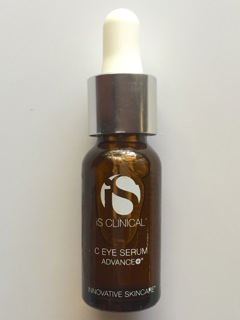 This has become my go-to eye serum, replacing the Hydrafacial MD ETX Eye Gel (which was recently discontinued).
This has become my go-to eye serum, replacing the Hydrafacial MD ETX Eye Gel (which was recently discontinued).
In addition to 7.5% Ascorbic acid, this too has the bioidentical Copper Tripeptide Growth Factor found in Super Serum in a hydrating base of 40% Hylauronic Acid.
What I love about it is the gentleness of it. It gives me a big dose of Vitamin C without irritating my eyes. My eyes can sometimes get irritated by other Vitamin C treatments. This one was specially formulated for the eyes, so there should be no ocular irritation.
If you have fine lines or wrinkles around your eyes, a Vitamin C eye serum like this would be a great addition to your routine.
You need to add an eye cream over this serum to give your eyes enough long-lasting moisture.
Emulsion (opaque, lightweight fluid)
Lira Clinical Bio Hydra C Serum ($56, 2 oz)
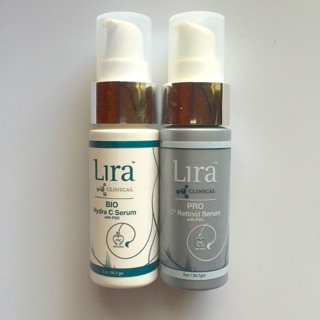 Tetrahexyldecyl Ascorbate (THDA), plus 3 other sources of Vitamin C
Tetrahexyldecyl Ascorbate (THDA), plus 3 other sources of Vitamin C- a light emulsion – more fluid than a lotion
- dispensed by a pump
This serum, along with Lira’s Pro C4 Retinol Serum (below), is fantastic. I cannot rave enough about them.
They both work very well. But it’s their texture that keeps me reaching for them over and over.
I like the light fluid. It spreads easily and absorbs fast. And it layers with other products without any problem. You can read a mini review of both serums here: Lira Clinical Vitamin C Serums.
Lira Clinical Pro C4 Retinol Serum ($59, 2 oz)
- Tetrahexyldecyl Ascorbate (THDA), plus 3 other forms of Vitamin C
- like the Bio Hydra C but also contains Retinol
- a light emulsion – more fluid than a lotion
- dispensed by a pump
I love this product. See review here: Lira Clinical Vitamin C Serums.
Lotion (consistency of a light moisturizer)
Revision Skincare Vitamin C Lotion 30% ($109, 1 oz)
- Tetrahexyldecyl Ascorbate (THDA), 30%
- feels like a light moisturizer, can double up as a moisturizer if oily or combo-oily
- dispensed by a pump
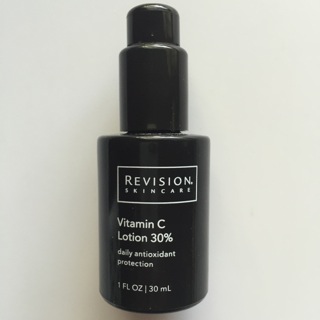 This is one of my favorite Vitamin C treatments because it packs in so much Vitamin C and has a great form of Vitamin C.
This is one of my favorite Vitamin C treatments because it packs in so much Vitamin C and has a great form of Vitamin C.
THDA is the best non-acidic form of Vitamin C. Also the most stable and the most bioavailable. It’s less commonly found in formulas because the ingredient is much more expensive.
If you can’t use ascorbic acid because it’s too strong on your skin, you should look for THDA.
The percent concentration is 30%, which is exceptionally high (but it’s still gentle on skin). It also comes in a 15% concentration.
The lotion texture makes it ideal as a summer time moisturizer for someone who is oily or combo. In the winter, it’s a moisturizing serum that layers well with other products.
Light Gel (syrupy consistency)
Ole Henriksen Truth Serum Collagen Booster ($48, 1 oz)
- Sodium Ascorbyl Phosphate (SAP), Calcium Ascorbate, and 3 botanical sources of Vitamin C (orange, rosehips, grapefruit)
- a classic serum texture (syrupy liquid)
- dispensed by a pump
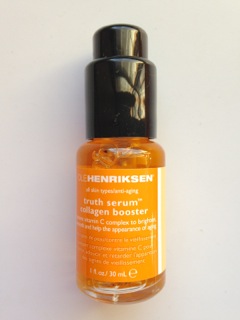 This is a wonderful Vitamin C serum that has been a longtime bestseller for good reason. It works well on and is easily tolerated by many people. I like how it hydrates my skin and provides a radiant glow.
This is a wonderful Vitamin C serum that has been a longtime bestseller for good reason. It works well on and is easily tolerated by many people. I like how it hydrates my skin and provides a radiant glow.
I have bought many bottles of this in the past. I no longer use it because I have moved onto more sophisticated formulas. But I still love it and recommend it.
It’s a great option if you prefer purchasing your products from a retail store such as Sephora, or if you don’t have access to professional lines.
If you are a beginner to skincare or just getting started with Vitamin C serums, this would be a great starter serum.
It also has a reasonable price point ($48 for 1 oz).
Circadia by Dr. Pugliese Vitamin C Reversal Serum ($60, 0.5 oz)
- Magnesium Ascorbyl Phosphate (MAP)
- a thin gel (hyaluronic acid base)
- applied by a dropper
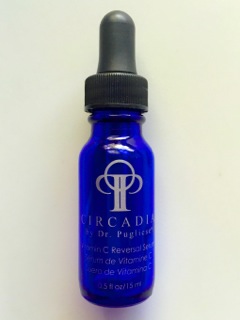 This is a very moisturizing Vitamin C serum. Hyaluronic acid makes up the base, and there is a quite a lot of it, providing a ton of moisture.
This is a very moisturizing Vitamin C serum. Hyaluronic acid makes up the base, and there is a quite a lot of it, providing a ton of moisture.
It’s a thickish gel that has some ‘weight’ to it. I point this out because some people don’t like loose (runny) liquids. If you are the person who likes the feeling of something thicker or creamier, this would be a better choice than the iS Clinical serums, which have a thin viscosity.
This gel texture would certainly appeal to dry skin types.
I like to use this when my skin is dehydrated. It feels good when I rub it in because it has a nice slip. It also spreads easily for a gel and does not feel sticky afterward.
Sesha Skin Therapy Clinical Complex-C Serum ($89, 0.5 oz)
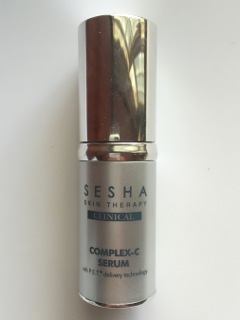 Ethyl Ascorbic Acid (water-soluble and oil-soluble)
Ethyl Ascorbic Acid (water-soluble and oil-soluble)- a classic serum texture (syrupy liquid)
- dispensed by a pump
This is another AA serum that offers other powerful age-fighting ingredients. So it’s more than just a Vitamin C serum.
It has Venuceane, the trade name for a light-activated antioxidant that neutralizes ROS (oxygen radicals); the Argireline peptide (neuropeptide); and a hibiscus extract that mimics a growth factor.
Dry Gel (solid)
Dr Dennis Gross Hydra-Pure Vitamin C Brightening Serum (old packaging) ($95, 1 oz)
- L-ascorbic acid, stabilized in an anhydrous base (anhydrous means no water), which is how it is kept stable (water breaks down AA)
- a dry silicone gel (the texture of primer)
- dispensed by a pump
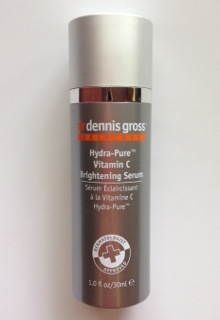 This is similar to the PCA Skin C & E Cream (below). Both stabilize AA by putting it in an anhydrous base so it won’t break down in water. Both are dry solids except one comes out of a bottle, and the other a tube.
This is similar to the PCA Skin C & E Cream (below). Both stabilize AA by putting it in an anhydrous base so it won’t break down in water. Both are dry solids except one comes out of a bottle, and the other a tube.
This one looks and feels like a face primer. At the time I bought this, my mind must’ve been distracted. I don’t like silicone textures unless my skin is irritated. When it comes to serums, my personal preference is for wet fluids.
If you happen to wear primer, this serum could function as a primer because it creates a smooth surface on skin.
Cream or Dry Ointment (solid)
PCA Skin C & E Strength Max ($94, 1 oz)
- L-ascorbic acid, 20% stabilized in an anhydrous base (anhydrous means no water), which is how it is kept stable (water breaks down AA)
- Vitamin E (tocopherol), 5%
- a dry silicone cream (has a white color)
- squeezed out of a tube
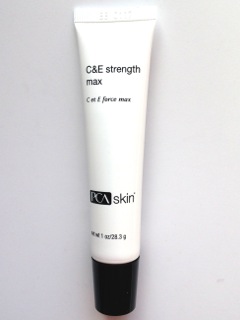 Because this is in a solid form, I use this as a spot treatment rather than slathering it all over my face.
Because this is in a solid form, I use this as a spot treatment rather than slathering it all over my face.
It’s not something I use often because it sometimes pills with my other products (much more often than is acceptable to me). Plus I personally don’t like dry silicone textures in general.
I have found that this is best applied directly to clean skin (nothing on it), which circumvents some of the pilling issues. If your entire routine consists of PCA products, you may not have the pilling issues. But since I use products from different lines, and my routine is never exactly the same every day, it poses a problem for me.
What’s nice about it is the high percentage of Vitamin E (5%). Vitamin C and Vitamin E work synergistically together, which means that when they’re both together in the same product, the antioxidant protection lasts much longer.
Oil
Ole Henriksen Pure Truth Youth Activating Oil ($45, 1 oz)
I actually don’t like this oil at all but am showing it as an example of how you can get Vitamin C from an oil rather than a serum.
This oil is thick, feels very heavy to me, and is super smelly. By smelly, I mean the scent is overwhelmingly strong. I personally don’t like it.
I can only use this oil in the dead middle of winter when it’s very dry or raw outside. If you have dry, mature skin that craves oil, you would probably welcome this oil.
Powder
Philosophy Turbo Booster C Powder ($39, 0.25 oz)
- L-ascorbic acid
- powder is scooped out with a spatula (provided in the box) and mixed into a serum or moisturizer immediately before use
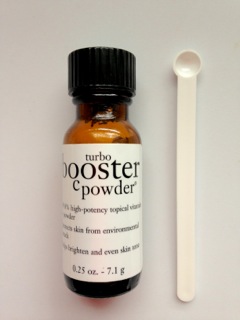 This Vitamin C powder is one of the few ready-to-mix powders on the market. When it’s in a dry format like a powder, the ascorbic acid is stable. It won’t degrade. Unstabilized ascorbic acid breaks down (and oxidizes) in an aqueous (water-based) solution because ascorbic acid is water-soluble.
This Vitamin C powder is one of the few ready-to-mix powders on the market. When it’s in a dry format like a powder, the ascorbic acid is stable. It won’t degrade. Unstabilized ascorbic acid breaks down (and oxidizes) in an aqueous (water-based) solution because ascorbic acid is water-soluble.
What’s nice about a powder like this is that it is shelf-stable for a long time. You don’t have to worry about using it up within a year from opening. You can scoop some out whenever you feel like it.
I used this powder some years ago, back when ascorbic acid (AA) formulas were notoriously unstable. Today’s advanced AA formulas are much more stable. So I don’t need to rely on this method to get AA.
Mixing is also too much of a hassle for me. I don’t have the patience to do this anymore. Applying serums is enjoyable to me, and if there’s a ready-made serum that’s good, I’d much rather use that.
Dermalogica ChromaWhite Extreme C (discontinued in 2014) ($85, 0.3 oz)
- Magnesium Ascorbyl Phosphate (MAP)
- a small amount of powder is tapped from the tip of the bottle onto a finger, dabbed onto a specific part of the face to be treated (e.g. wrinkle, brown spot)
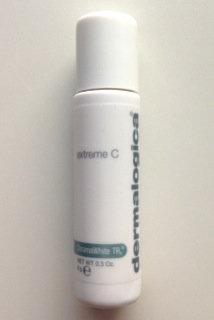 This product has been discontinued, but I wanted to show you another example of the powder form.
This product has been discontinued, but I wanted to show you another example of the powder form.
This was actually intended as a spot treatment for dark spots or areas of discoloration.
It had an unusual delivery method – it required dabbing the powder, one finger at a time, to a small part of the face. This was a slow process, suitable for only a few spots, not a practical treatment for the whole face or large areas.
I also found it messy and tedious to apply. No matter how careful I was, some powder always managed to fall off my finger before it even made it to my face. A lot of product waste for a pricey product.
The powder also did not absorb well into my skin. Instead, it left a powdery residue unless I rubbed it in hard. I knew people who did like it, but they had oily skin. So my guess is the powder absorbed better on oilier skin.
Of course, there are many good serums other than what you see here. It’s impossible for me to cover even the most popular brands. But I hope that through these examples, you will have a better idea of what to look for.
Do you have a favorite Vitamin C serum? If so, share your favorite in the Comment section below!
Related Posts:
Want posts delivered straight to your inbox? Sign up for the weekly newsletter here.

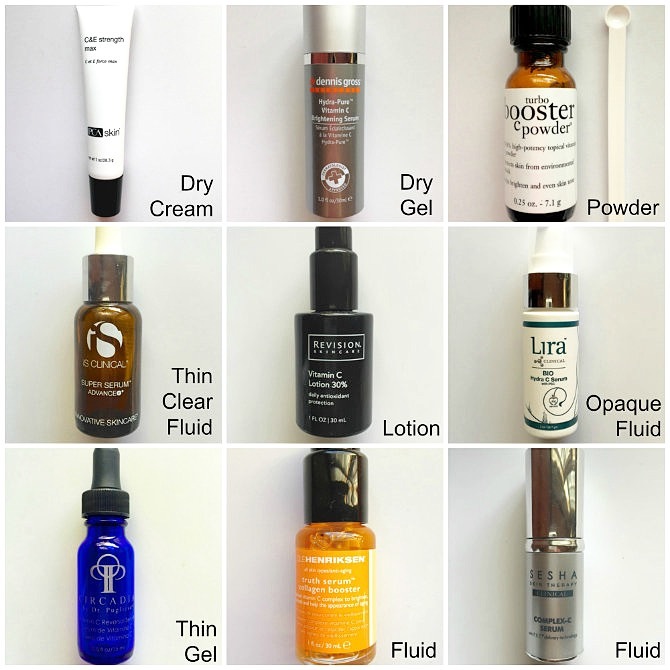
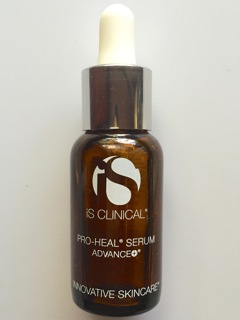


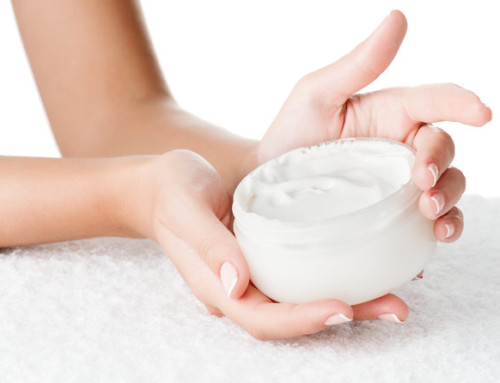


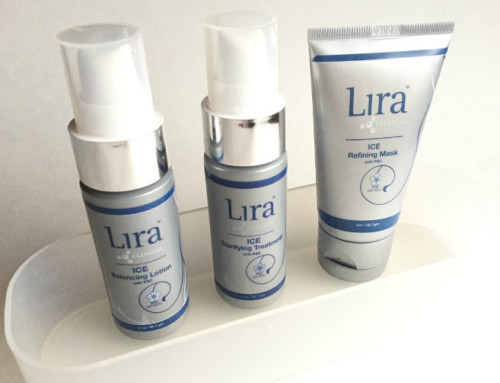

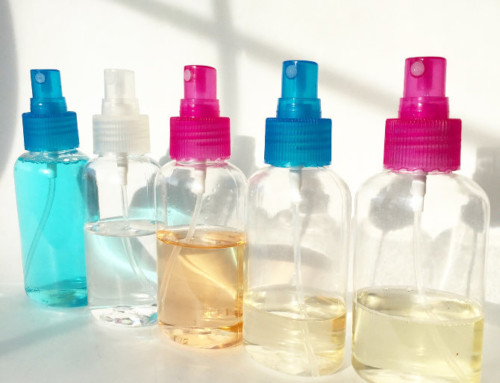
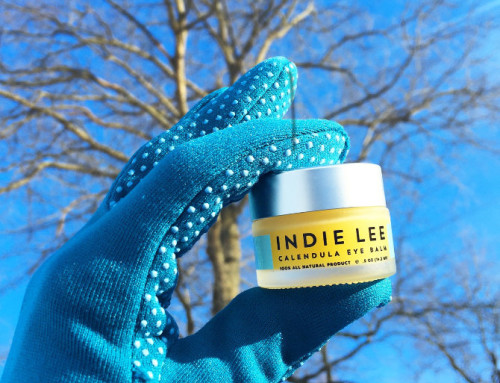
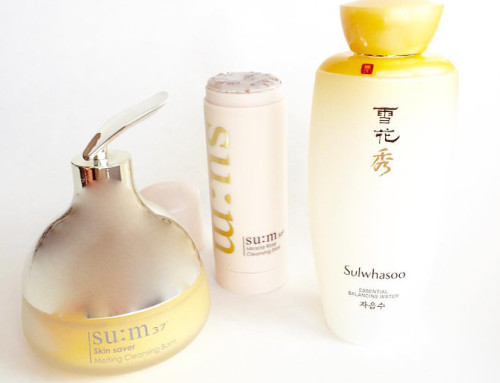
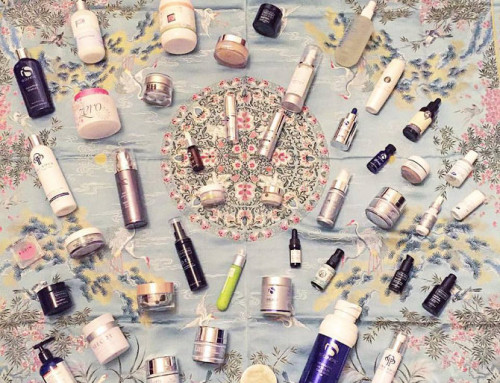
Awesome article on the different Vitiamin C products!! I will have to look into the IS Super Serum when I’m done with my SkinCeuticals Phloritin CF. Keep up the informative articles, its incredibly helpful with all the products out there!
Thank you Susan, I’m happy to hear your feedback! If you end up using Super Serum, I hope it works well on your skin!
I loved the post Rita. As always, very detailed and informative. I wanted to ask you what do you think of the Zelens antioxidant serum?
Thank you Aisha, it’s very nice to get your note. Zelens’ Antioxidant Serum has a blend of great antioxidants. I haven’t used it on myself, but I would find it worth trying a sample. The pricing is on the high side though.
It Would have been a FAR better Article if You had Posted Prices, or approximate
prices of the Items. Before I look into an Item, the price will immediately tell me
If I can pursue it. All these require research since you did not mention prices…
do I really want to look into all of these??
Thank you for your suggestion. For this article and actually everything on this site, my primary goal is to help you learn something about skincare, not to review products. The products shown here were meant to be a teaching tool. But I can see why the prices would be helpful and will add them.
Linda this would have been a much nicer comment section if you would have NEVER commented. Girl are you serious? Go play in traffic with your self righteous attitude!
#IvacationInHell
I loved this article. My favorite serum is by Rejuvelle. It has L-Ascorbic 20% plus a little MAP with vitamin E and Ferulic acid, is also has growth factor peptide and plant stem cells. I found it on Amazon for just $36.95. The ingredients are amazing and the texture is like a fluid but not overly watery. I used to use skinceuticals which costs 3 times more and the Rejuvelle vitamin C has way better ingredients in it. This product really is a super antioxidant. I highly recommend it. They also have a vip ist on there website so if you join you will get a 10% coupon. The website in case you were wondering is http://www.rejuvelle.com
Thank you Julie! 🙂 It’s great to know your favorite serum – thank you for sharing it. I don’t know this one by Rejuvelle. The ingredient mix sounds great, and wow, much more budget friendly than Skinceuticals. I am glad to learn about it and will be checking it out!
I love your alticles, they are full of useful information. I find myself coming back to them before I make a new product purchase. Someone recommended La Rocha Posay Active C. Is this a good formula?
Thanks very much Elaine, I’m happy to hear that. The LRP Active C treatment looks good. I have not used it myself, and do not know how much ascorbic acid is in it, but it’s stabilized and will do its job!
Hi! Have you tried ZO’s C-Bright? 🙂
Hi Pernille, I have not tried this serum. Is this one you like?
Hi Rita,
I’ve been doing a lot of research on Vitamin C ever since I ran into your blog, since I really want to start using it.
I ran into a series of articles saying that some forms of Vitamin C are really dangerous (in summary, if I understand correctly anything with “palmitate”, ascorbyl tretaisopalmitate, tetrahexyldecyl ascorbate and liposome encapsulated vitamin C. She also says that MAP is safer than ascorbyl-palmitate but that it needs a lot of chemicals to stabilize it so it’s not ideal.
Here are the link to the 2 main articles:
http://feleciaroselabs.com/is-my-expensive-vitamin-c-serum-killing-my-skin/
http://feleciaroselabs.com/the-wrong-vitamin-c-serum-can-have-disastrous-consequences/
Wondering what your thoughts are on this – is there any validity to these claims or are they blown out of proportion.
Thank you Rita.
Hi Gina,
I don’t think you should worry. The 2002 JID study cited in the blog post is interesting in that it calls attention to two competing actions of Ascorbyl Palmitate once it crosses the cell membrane and ends up inside a skin cell.
1) Antioxidant benefit – its ability to neutralize Reactive Oxygen Species
2) Cell membrane lipid damage – due to a lipid peroxidation pathway
I do think lipid peroxidation (oxidation of lipids) is a valid concern. However, here are 3 thoughts that crossed my mind while reading this study:
1). There are other antioxidants in skincare that protect cell membranes from lipid peroxidation – Vitamin E is the most common, and it works in synergy with Vitamin C. Vitamin E is a lipid-soluble vitamin whose main function in skincare products is to protect cell membranes and epidermal lipids from said lipid peroxidation. Also, skin has its own source of Vitamin E (delivered by sebum). There are other antioxidants that protect lipids, such as Alpha Lipoic Acid, Beta Carotene, Lycopene, Ergothioneine, Superoxide Dismutase.
2.) An antioxidant can work in two places – extracellular (outside the cell) and intracellular (inside the cell). The lipid peroxidation observed in this study occurred intra-cellularly. Topical antioxidants work extracellularly first. If they haven’t been depleted yet, and they are able to penetrate cell membranes, then they enter cells. The antioxidant benefits of Ascorbyl Palmitate are extracellular too, whereas the study is only looking at what happens to it intracellularly.
3.) In this study, the AP was tested on keratinocytes in culture, not on living skin on a person. The intracellular levels of AP in culture (in vitro) is higher than it would be in living skin (in vivo) – because there are many layers of cells in the epidermis, and only a portion of ingredients gets through. Therefore, the true level/impact of lipid peroxidation on living skin would be lower than what was reported in the study.
Ascorbyl Palmitate happens to be the most common oil-soluble, ester form of Vitamin C. If you want to play it safe, you can avoid this form (better skincare products use other forms anyway) when you’re exposed to a lot of sun.
BUT, the conclusions of this study cannot be applied to those forms of Vitamin C you mentioned (e.g. with the word “palmitate” in its name). Here’s why:
1). The molecular structures are very different, and therefore they behave differently. PS – Ascorbyl Tetraisopalmitate is the same thing as Tetrahexyldecyl Asccorbate – different naming systems.
What various forms of Vit C have in common is an ascorbic acid molecule. How they differ is what’s attached to it. For example, Tetrahexyldecyl Ascorbate (THDA) is structurally different from Ascorbyl Palmitate (AP). Whereas AP has one palmitic acid residue attached to ascorbic acid, THDA has 4 palmitic residues attached to the ascorbic acid. These 4 groups act as stabilizers, making the molecule extremely stable – more stable than any other ester or salt form of Vit C. THDA offers better penetration into skin cells and is also retained in the epidermis and dermis, forming a reservoir of Vitamin C (in contrast to ascorbic acid, which passes through and quickly diffuses into the bloodstream).
2). In order to conclude that other forms of Vitamin C may be cytotoxic to cells (by the same lipid peroxidation mechanism identified in this study), that study would need to be replicated testing those forms. This study only looked at Ascorbyl Palmitate.
You mentioned MAP having the disadvantage of requiring more chemicals to stabilize it. I would not focus on the number of chemicals. What’s more important than number is the *what*, and more importantly, the *combination of those what’s.* 10 innocuous chemicals working in synergy are better than 5 chemicals where one or more is problematic. With the trend toward natural products, there is a tendency to focus on number of chemicals, and I personally think it is an approach that provides a false sense of security and sometimes leads to erroneous conclusions. Ultimately, what matters is the final safety profile of the end product. While more ingredients tend to increase complexity, it doesn’t mean more is worse.
Magnesium Ascorbyl Phosphate (MAP) happens to be an excellent Vit C option for people with sensitive or compromised skin, because it produces virtually no irritation and is very stable. The phosphate group in this compound allows for cells to uptake a higher amount of ascorbic acid than ascorbic acid alone. Like THDA, MAP also has a much higher stability profile than AP (but less than THDA).
Another thing I want to point out – what’s important to realize about L-Ascorbic Acid is that, while it is the most biologically active form (in fact, it is the only form that cells can use; other forms of Vitamin C are converted to ascorbic acid through enzymatic reactions), it is also the most unstable form when it’s in an aqueous (water) solution. It dissociates rapidly, and when this happens, it becomes a pro-oxidant (the opposite of an antioxidant). Therefore, of all the Vitamin C forms, Ascorbic Acid is the trickiest and most problematic. If you are worried about potential ‘danger,’ this is the one to worry about. (By the way, I think ‘danger’ is too strong a word for a discussion about Vitamin C; real danger is ionizing radiation). Free radicals generated by oxidizing substances damage everything in their line of sight (proteins, DNA, lipids), not just epidermal lipids or cell membranes. With AA, you need to be sure that an aqueous serum has been formulated correctly. Since this information is not readily available, I caution the use of this form.
Liposomal encapsulation is one solution around it. Liposomes are common in skincare – they provide the worthwhile benefit of stabilizing ingredients, providing timed released, and increasing penetration of ingredients that otherwise would not go very far on their own.
But back to your main concern – on the safety of various forms of Vitamin C, I would not worry. Vitamin C provides a positive net benefit to skin that is well documented and proven. In my opinion, the best choices balancing efficacy and safety are TDHA and MAP, followed by SAP (Sodium Ascorbyl Phosphate) and Ascorbyl Glucoside. I hope these thoughts help!
Rita,
I cannot even begin to thank you enough for this response. I really appreciate the clear and precise answers and the background/knowledge/why’s you shared along with it because it makes so much difference in understanding the information and even retaining it (as much as I could – I’m sure I’ll be referencing this in the future). Plus I enjoy learning.
I have just become a subscriber.
Thanks again.
Gina
Hi Rita, how are you? I ran into 2 Vitamin C serums and wondered what you thought of them. (If you have time and/or are interested in taking a look at them.)
Product 1 by Deciem: 25% vitamin C: ethoxydiglycol, ethyl ascorbic acid, hydroxyphenoxy propionic acid, phenylethyl resorcinol. $33
Product 2 by Indeed Labs: 24% vitamin C: dimethicone, ascorbic acid, polysilicone-11, ethylhexyl palmitate, peg-10 dimethicone, silica silylate, silica dimethyl silylate, butylene glycol, sodium hyaluronate $24.99
I did look up each ingredient individually and nothing stood out as being “bad”.
I’m curious which one you like best out of the 2 as far as ingredients.
I am still very much considering the Lira based on your recommendation but the price tags on these is tempting. Although I realize I’m not getting the 3 types of Vitamin C, etc., so that in itself may be worth the $ for the Lira. Just curious what you think.
Thanks! 🙂
Hi Gina, unfortunately I haven’t tried either serum, so I can’t comment on them. The Lira is very easy to like (appealing light emulsion texture) and incorporate into a routine (non-problematic with other products). If you’re going to try the Lira, I’d recommend the C4 Retinol (C+retinol), which produces nice results 🙂
Hi Rita – oh, no problem, I just thought you might have an opinion based on ingredients alone even though you might not have tried them. But I realize that’s hard to do without taking all factors into consideration like texture, etc. As far as the Lira, I’m on retin-a (just twice a week right now, trying to build up my tolerance) – would you still recommend the one with retinol?
Yes, the C serum with retinol is terrific. You can use it on the nights when you’re not using Retin-A. It’s not aggressive, so you don’t need to worry about it using it concurrently with Retin-A, just not on the same day.